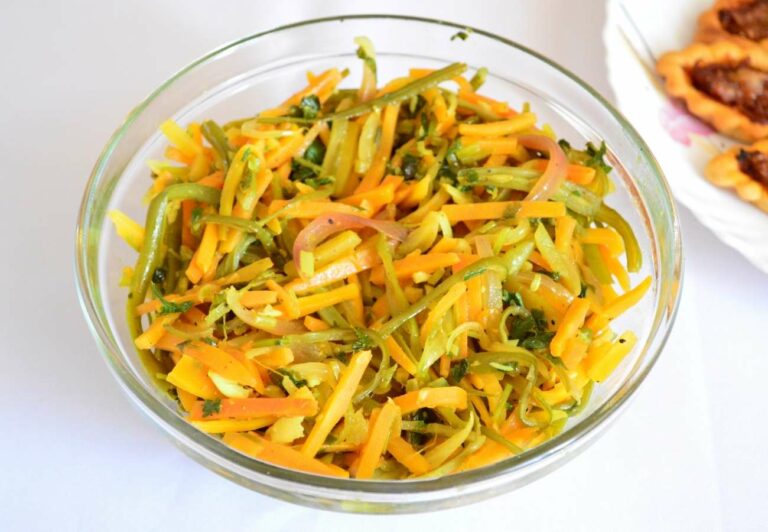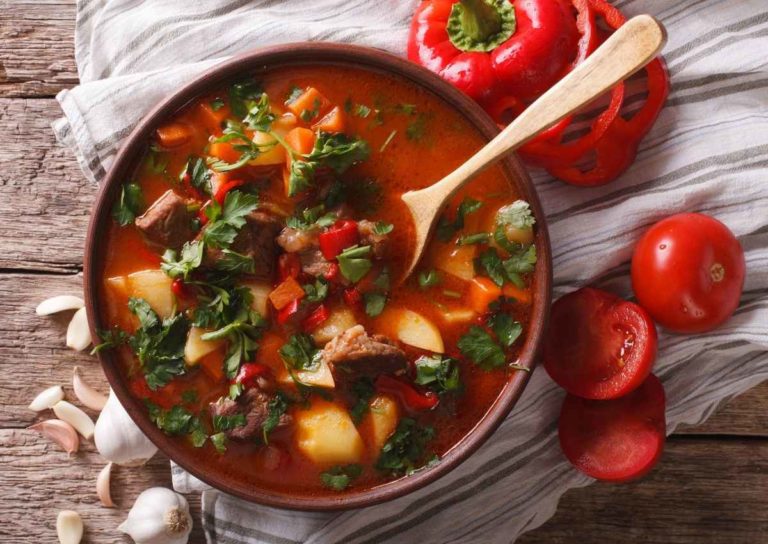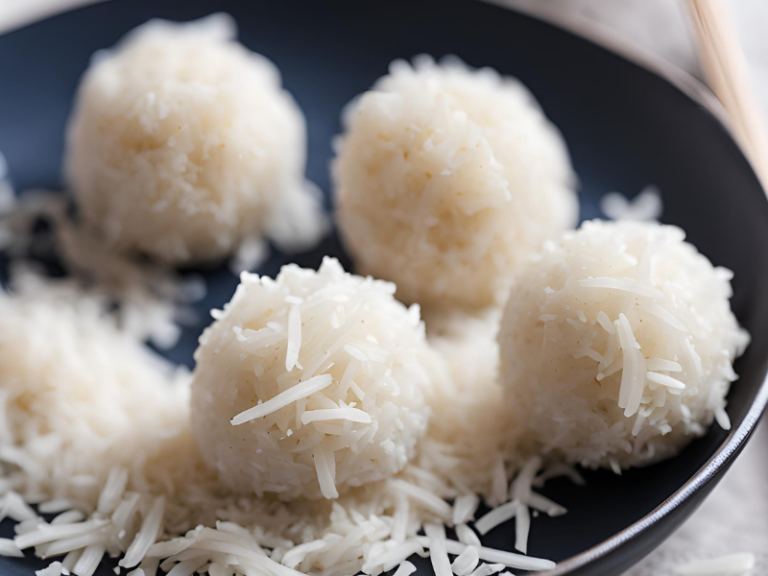Palaun Cuisine: Top 10 Foods of Palau
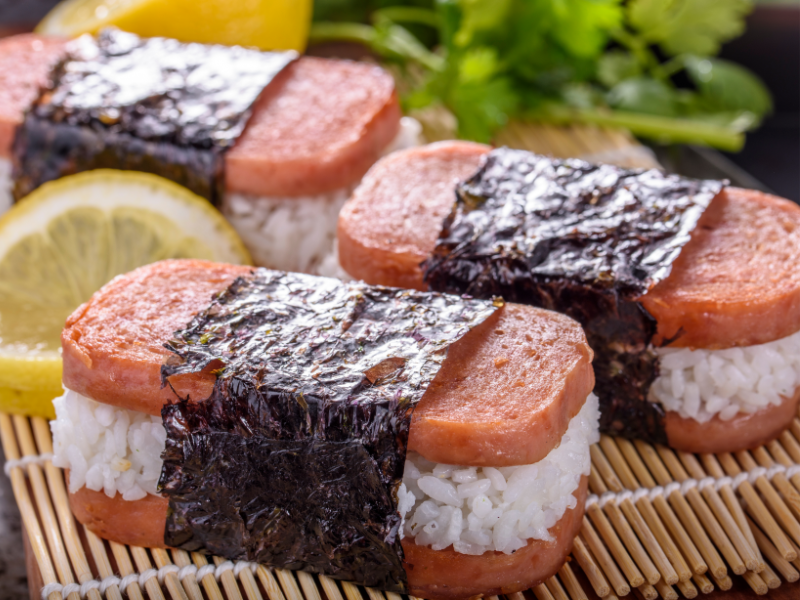
Palau is a country in Oceania, Southeast of the Philippines, and made up of over 500 islands. While Palau is one of the smallest countries in the world, it’s a very popular tourist destination; tens of thousands of people travel here each year to go scuba diving and snorkelling around their coral reefs and wrecks from World War II.
Originally inhabited by Austronesian settlers over 3,000 years ago, Palau has since been influenced by Spanish, German, and Japanese colonization before it gained independence in 1994.
Most Popular Dishes of Palau
Palauan cuisine reflects the island’s tropical climate and wealth of seafood, fruits, and root vegetables. Seafood is abundant on Palau island, and can be found in many of the nation’s most popular dishes.
Root vegetables such as taro, pumpkin, yams and pandan are staples of Palau cuisine. Common seasonings in Palauan include turmeric, lemongrass, and ginger which are all grown on the islands.
As Palau neighbors the Philippines, a lot of popular Palauan dishes has been brought over or inspired by Filipino cuisine.
Spam Musubi (Spam Sushi)

Spam Musubi is a sushi-like dish that is made by sandwiching white rice with slices of grilled Spam and wrapping it in nori seaweed.
This dish uses American canned Spam which is made with processed pork and ham, and gained popularity worldwide during World War II.
Spam Musubi is enjoyed as a snack food and can be found in convenience stores throughout Palau.
Taro Rosti (Baked Grated Taro)
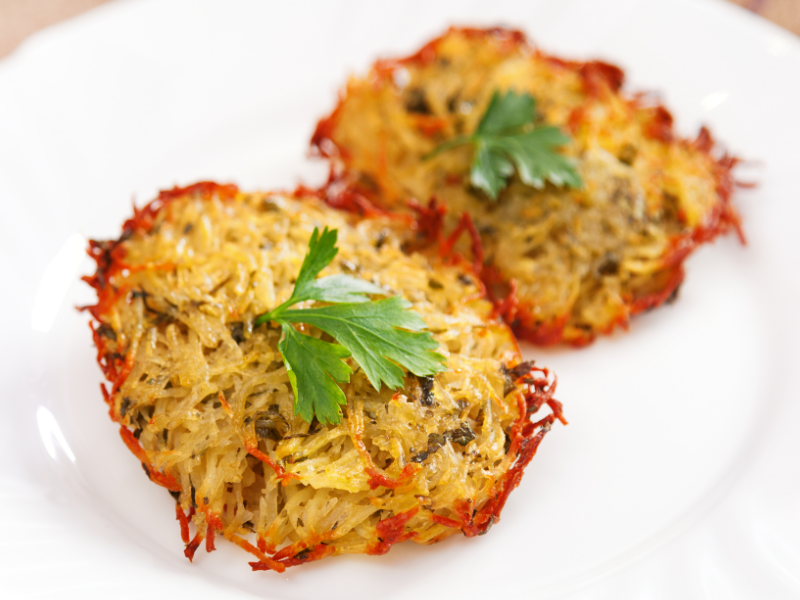
Taro Rosti is made by grating taro root and mixed it with onions, garlic, and spices. This grated mixture can then be fried until crispy and is served as a side dish or breakfast food.
The method used to make the roasted taro patties are similar to Eastern European latkes or hash browns, which are made with potatoes instead of taro.
Tinola (Chicken Soup)
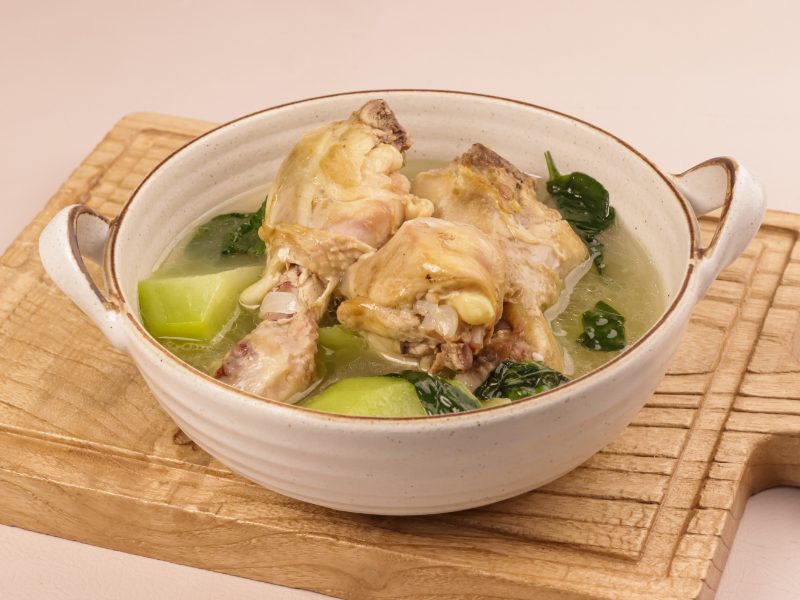
Tinola is a comforting dish made by cooking chicken in a clear broth along with green papaya and chili peppers. The soup broth is also flavoured with ginger and garlic.
Tinola is a popular Filipino dish that was introduced to Palau and has become a staple dish of Palauan cuisine.
Ukaeb (Minced Crab Meat)
Ukaeb is made by mincing crab meat and combining it with creamy coconut milk, lime juice, onions, and chili peppers.
In Palau, this coconut-crab paste is usually served by filling individual crab shells and topping them with extra coconut cream and green onions.
Tempura Fish
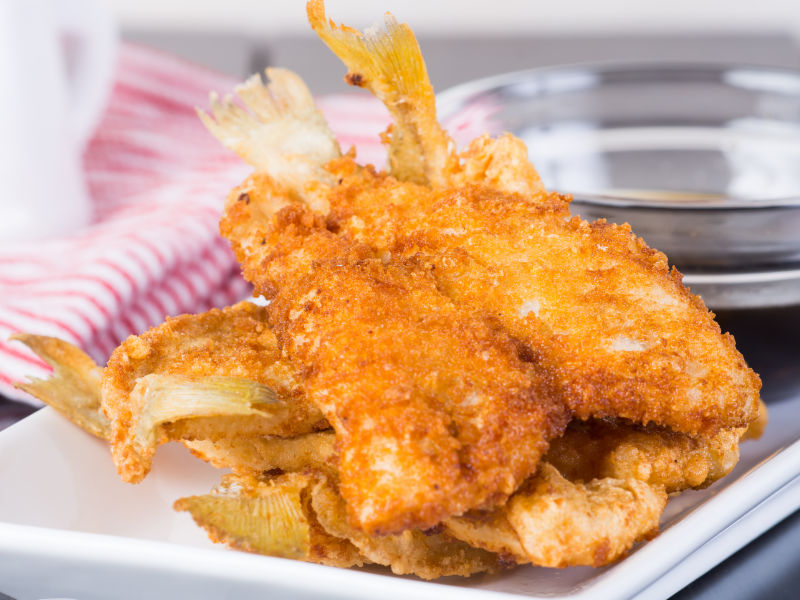
Tempura Fish is made by dipping fish fillets in tempura batter and deep-frying them in oil until they turn golden brown. This dish has a crispy texture, and is usually served with a side of rice and soy sauce to dip into.
Tempura is a popular Japanese cooking method that uses a thin batter made with ice water, egg and flour. The batter may also be made with baking soda or cornstarch to add to the crispy texture.
Other fried fish dishes are popular around the world, such as British fish and chips, although this recipe uses a different type of batter which is often made with beer.
Ulkoy (Shrimp Fritters)
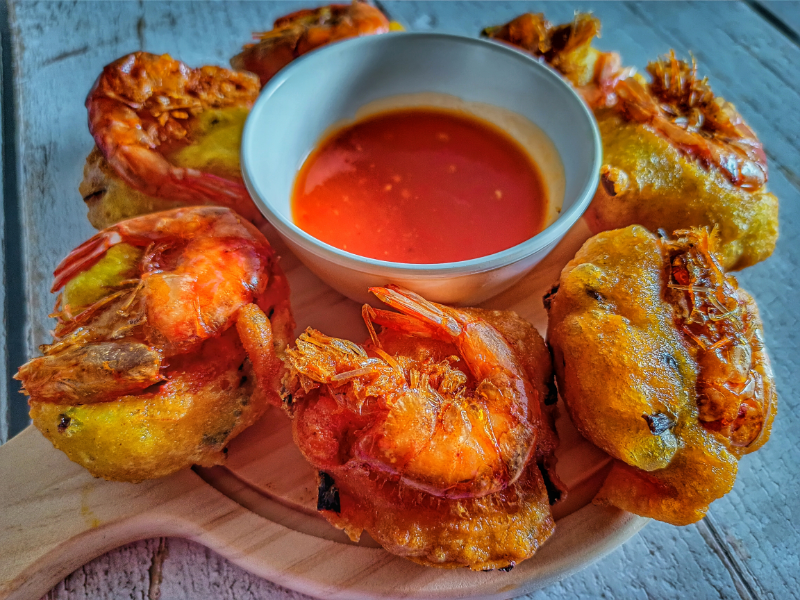
Ulkoy are fritters made using shrimp and squash, which are deep fried until they become crispy and are seasoned with Creole seasoning, salt and spices like cayenne pepper.
These fritters originate from the Philippines and are a popular appetizer and side dish. In Palau, ulkoy is served at festivals and special occasions.
Fruit Bat Soup
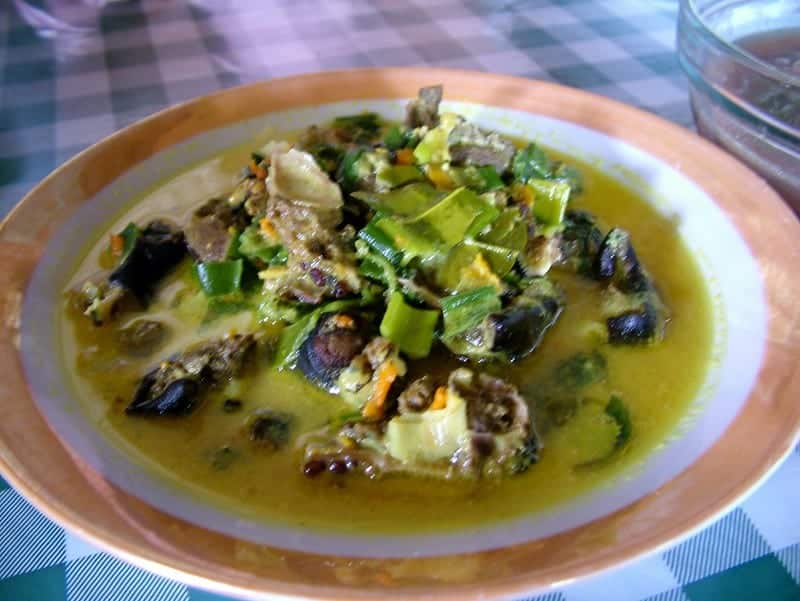
Fruit bat soup is made using the meat from flying foxes, which is then cooked in coconut milk with spices and ginger. This interesting soup dish used to be a staple of the locals’ diet in Palau, however now it is now considered more of a delicacy.
Fruit bat soup is one of the weirdest foods eaten around the world and definitely one of the most controversial dishes in Palauan cuisine because of the ethical concerns about eating fruit bats due to conservation efforts surrounding this species.
Halo-Halo
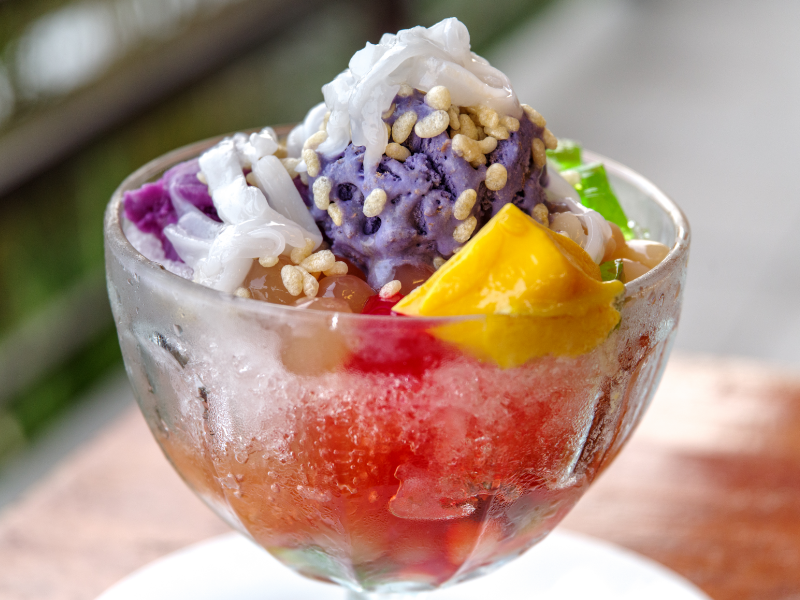
Halo-halo is a colorful dessert made with layers of shaved ice and other sweet ingredients including fruit, beans, jellies, and evaporated milk. The ingredients of this dessert can vary widely, particularly in different regions of Palau.
There is a specific order for the ingredients of halo-halo; generally, the fruit or beans are placed at the bottom of the container, which is then followed by shaved ice and then topped with ice cream.
This dish is originally a Filipino dessert, its name is the Tagalog word for ‘mixed’ because . Other similar iced desserts can be found around the world, such as Malaysia’s kachang and Korea’s bingsu.
Pichi-Pichi
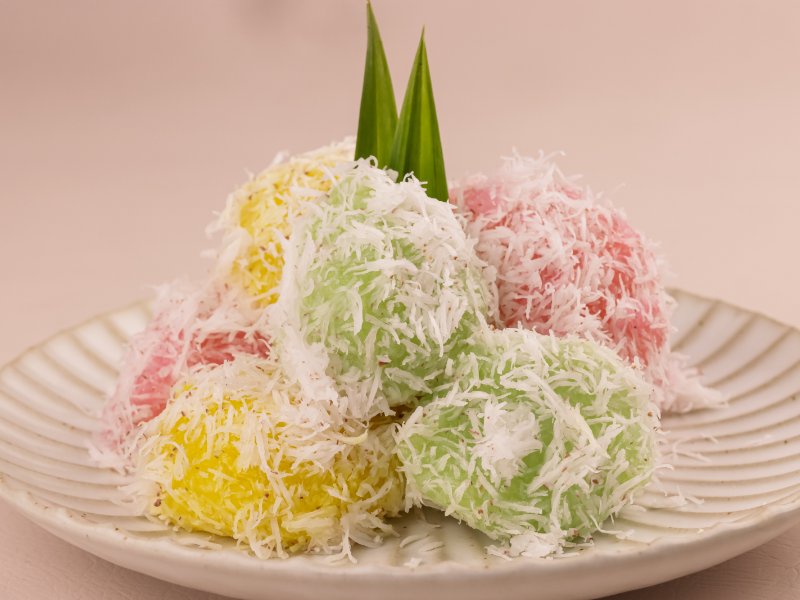
Pichi-Pichi is another popular Filipino dessert which is made by grating cassava and combining with sugar and coconut milk, shaping them into balls and steaming them. These are often colored with food coloring and topped with grated coconut.
This dessert has a sweet and chewy texture. Different flavorings may be added to pichi-pichi, for instance ube, lemon or raspberry.
Kava
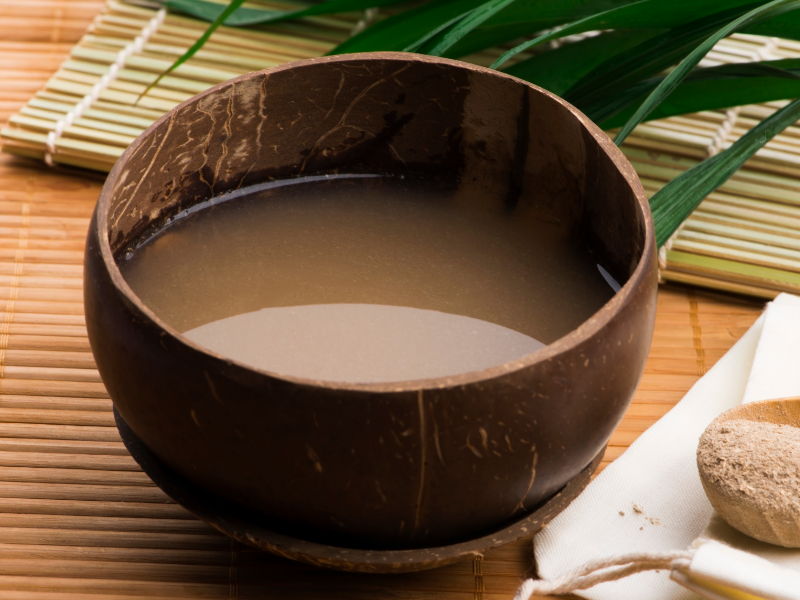
Kava is a traditional Palau beverage made from the roots of the kava plant which has a peppery, earthy flavor. It can be somewhat bitter, so is sometimes mixed with sugars or other fruit juices like orange juice.
In the Pacific Islands, kava is a popular choice to use in ceremonies for relaxation, it is said to have muscle-relaxant effects, in a similar way to alcohol.

